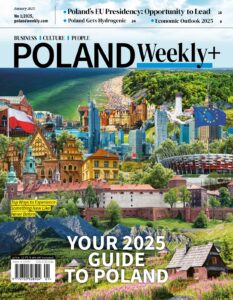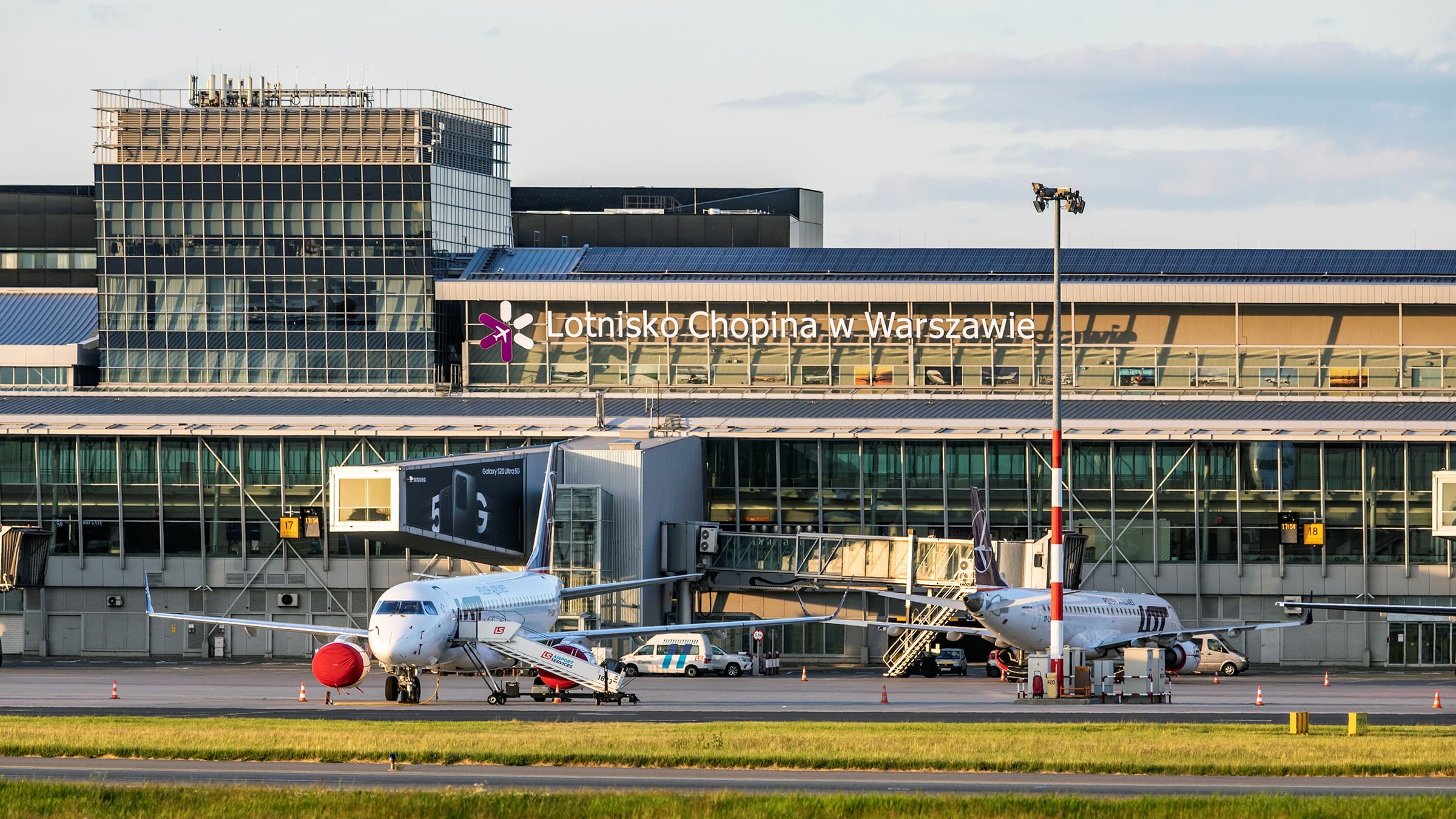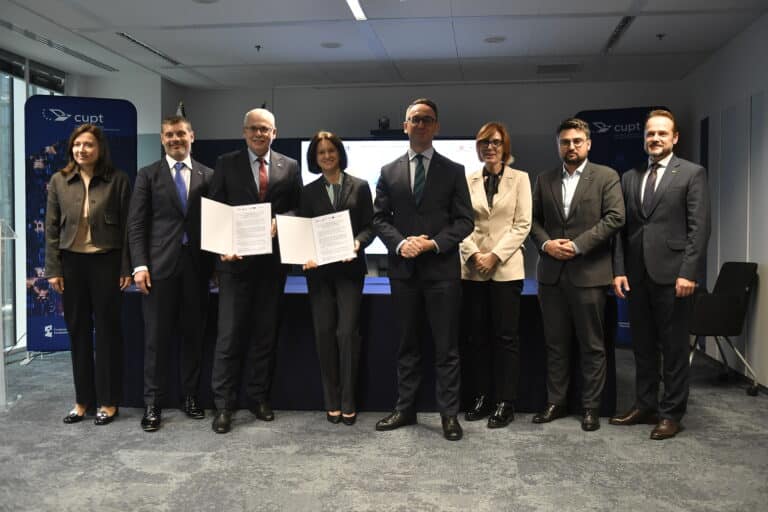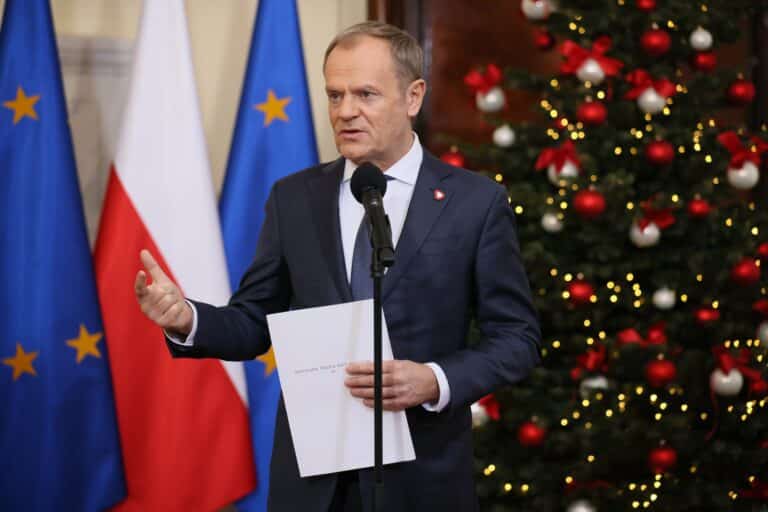Warsaw Chopin Airport: Present and Future
Warsaw Chopin Airport was established 90 years ago. For years, it has remained a window to the world and the main Polish transfer hub. It is also the largest airport in Central and Eastern Europe. What are the biggest challenges it has to face and what will its future look like?
The management board of Polish Airports (PPL – the company managing Warsaw Chopin Airport, Modlin and Radom) appointed in March this year faced a very difficult situation related to the airport’s capacity. This was connected with the Solidarity Transport Hub (STH) project. After conducting preliminary audits commissioned by the government plenipotentiary for the STH, it turned out that the deadline for handing over the airport infrastructure indicated by the previous management of the STH had to be postponed from 2028 to fall 2032. The management of the STH was aware that their deadlines were absolutely unrealistic, but still maintained them. As a result, there was no provision for securing the airport infrastructure for the growing passenger traffic in Warsaw. It was also intended to shut down Warsaw Chopin Airport in 2028 and automatically transfer all traffic to CPK.
Airport capacity is running out. It can be said that Warsaw Chopin Airport has a 4-year delay in the modernization of airport infrastructure, so actions should be taken immediately.
The fight for capacity is on!
Currently, the most important issue is the modernization of the terminal. The PPL management board has undertaken a capacity analysis and drawn up a list of necessary investments. Their completion is planned before the summer season in 2029. Work is underway on a detailed program for their implementation. Investment plans include an increase in the number of departure gates in the Schengen zone, which will be possible after extending the southern pier towards the former Etiuda low-cost airline terminal. The changes will also allow for an increase in the number of gates in the non-Schengen zone and adapting a larger number of contact stands, i.e. passenger bridges to handle E-code aircraft. This, of course, means the need to increase the throughput of the sorting facility, i.e. adding a new processor. The first effect of these activities that will be felt by passengers should be the opening of the new part of the passenger terminal at the beginning of 2027.
Currently, the reconstruction of the PPS 5B aircraft apron is underway and the project to create a new PPS 15 apron will soon be launched. The apron will accommodate six C-code aircraft (e.g. B737, A320) or four C-code and one E-code aircraft (e.g. B787, B777). The company is also planning to replace CTX hand luggage scanners, and introducing solutions such as self-boarding check-in gates and self-service bag drop points. All this would speed up and improve the passenger service process.
PPL can finance its projects, but also profits from the EU funds
At this point, the management board of PPL assumes that all financial resources for these investments will be allocated from profits earned by the company. According to preliminary results – before the audit – PPL achieved almost PLN 1.31 billion in revenue in 2023, so it is able to finance all the necessary investments on its own. Within 10 years, all the investments will be repaid, including increased maintenance, employment and operating costs.
As part of some projects, where possible, PPL also uses EU funding. Two such tasks are currently being carried out. The first is “Investments in the field of dual-use infrastructure at Warsaw Chopin Airport in the scope of maintaining basic services operations (24/7).” The funding comes from the European Commission – Connecting Europe Facility 2021-2027 (CEF 2) as part of the Military Mobility initiative and covers three investment tasks: improving the safety of airport ground traffic by implementing an airport ground traffic imaging system, adjusting the quality of airport ground field lighting to the applicable regulations and modernizing the projector lighting on the aprons.
The second project in which PPL participates is “CP1 Deployment – Synchronized Modernization of ATM (CLEAN ATM)” under the EU instrument Connecting Europe Facility – CEF2. The signed project co-financing agreement is the result of a joint initiative of a consortium of nearly 40 applicants from 22 EU Member States. From Poland, only PPL S.A. and PANSA are taking part in the initiative. The subject of the project regarding PPL S.A. is, in particular, the development and implementation of the Airport Operational Plan (AOP) at Warsaw Chopin Airport, integrated with the European NOP platform (Network Operations Plan). The AOP is a consolidated operational plan containing all necessary data, contextual information, scenarios and indicators enabling decision-making by cooperating institutions. The AOP provides knowledge about the current situation and, by detecting deviations from the plan, contributes to faster decision-making and introducing possible changes.
More passengers, less planes
Forecasts indicate that in Warsaw there may be a demand for up to 800 operations per day. But there is currently no plan to increase the limit. The number of passengers is increasing, and at the same time the number of operations is decreasing. It is possible firstly, because the load factor is better – it currently exceeds the level of 80%. Secondly, the planes are bigger. That is why terminal investments are so needed. The theses of some experts that transaction limits are already used up or even exceeded are completely untrue. In March, the average was 447 operations per day – the limit is 600.
PPL’s strategy – regional development
PPL’s goal is to develop all regional airports, especially those in Mazovia. In the context of the traffic structure, which consists of traditional and low-cost traffic, it is necessary to modernize Modlin Airport to ensure diversification of air traffic in Poland. Failure to invest in the airport would result in the exclusion of low-cost traffic and the possibility of travel for price-sensitive passengers.
The airport in Radom has its limitations, including night flights, which are eagerly used by charter airlines. PPL is currently seeking environmental approval to change this. The airport will encourage carriers to expand their offer and develop their network of connections.
PPL strives to achieve a situation in which these three airports together will be able to serve 40 million passengers in 2032: 30 million in Warsaw and 10 million in total in Modlin and Radom.







